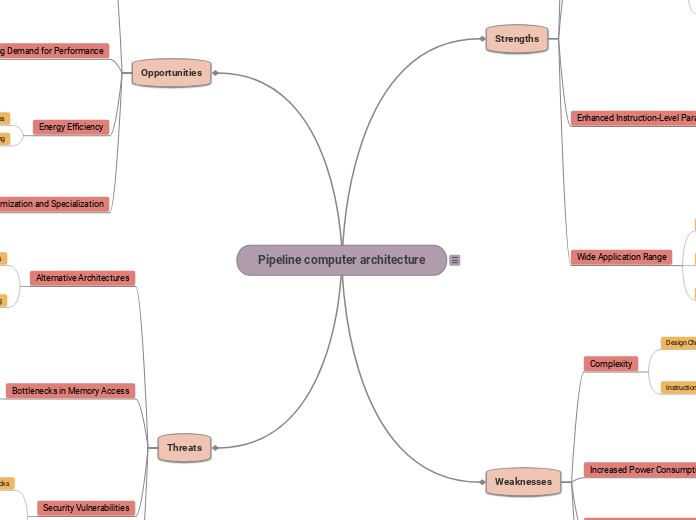作者:Raghav Kumaran 2 年以前
187
Pipeline computer architecture

作者:Raghav Kumaran 2 年以前
187

更多类似内容
Note: This SWOT analysis provides a comprehensive outline for assessing the strengths, weaknesses, opportunities, and threats associated with pipeline computer architecture. It is essential to conduct further research and analysis to gather specific information relevant to your context and industry.
reducing the demand for pipeline architectures
Other architectures and technologies may gain market dominance
making pipeline architectures more vulnerable to side-channel attacks
Caches and pipelines can leak information
compromising system security
Pipeline architectures may be susceptible to speculative execution attacks
hindering performance
Insufficient memory bandwidth can bottleneck data transfer to and from the pipeline
reducing overall performance
High memory access latencies can limit the advantages of pipeline architectures
challenging pipeline architectures
Specialized vector processors can provide superior performance for certain tasks
improving overall performance
Pipeline architectures can be tailored to specific application domains
meeting the demand for real-time inference
Pipeline architectures can accelerate AI and ML tasks
making pipeline architectures valuable
Growing volumes of data require faster processing capabilities
improving overall system performance
New memory technologies may enhance memory access speeds
making pipeline architectures more effective
Upcoming processor technologies can offer increased parallelism
increasing production costs
Pipeline architectures may require specialized hardware components
resulting in higher overall power consumption
Overlapping instructions consume additional power
or control hazards can decrease performance
data hazards
Pipeline stalls due to dependencies
such as video encoding and decoding
Supports efficient processing of multimedia data
such as scientific simulations and data analysis
Well-suited for computationally intensive tasks
improving overall system efficiency
Predicts and executes instruction branches in advance
reducing idle time during instruction execution
Enables concurrent execution of operations
enhancing performance
Allows independent instructions to be executed simultaneously
making it versatile
Can be implemented across various types of computer architectures
enhancing system scalability
Accommodates a higher number of instructions per unit of time
enabling customization and adaptability
Facilitates the addition or removal of pipeline stages
resulting in faster processing speeds
Minimizes the time taken to execute instructions
enhancing overall system performance
Allows simultaneous execution of multiple instructions